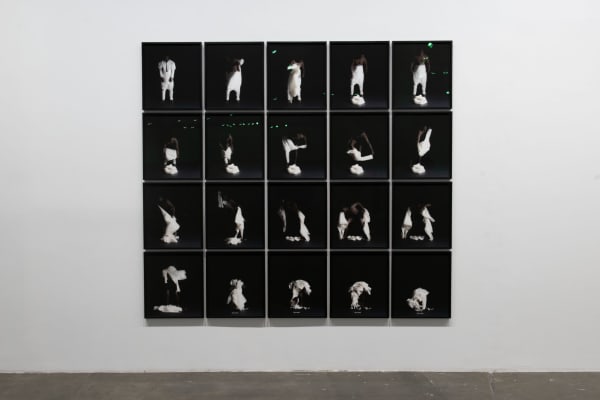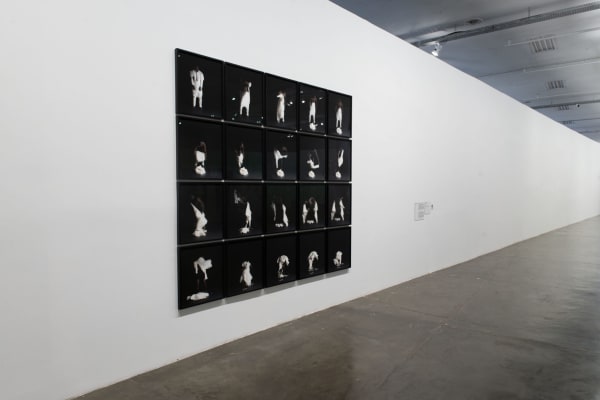Baptism
In the photographic installation Baptism (2019), we observe a set of twenty photographs showing Januário Jano taking off white clothes. The exuberance of the image of the whole draws attention. However, in the research of the materials, any disinterested contemplation is dissolved: the white clothes are memories of the civilizing impositions of the Portuguese colonizers on Angolans. The fabric, 100% cotton, refers to the fields of Baixa do Cassange, where the massacre that ignited the struggle for Angola’s liberation took place in 1961. This dimension of violence – especially the response to it – emerges from a craftsmanship that understands research not as a stage to reach a product, but as the living matter to which the gaze must constantly return when it is willing to propose other worlds.
Video, sculpture, painting, photography, installation, sewing, or interdisciplinary art, if you will. The repertoire of languages that Jano uses to put his ideas into practice is vast, as is vast and unsettling the range of forces that underlie all artistic making as a consequence of history and culture. There are many media, layers, and themes that are in friction when considering the complexities of the field of cultural identities, a terrain in which he operates to instigate debate. From Luanda, in Portuguese, but also from the land of the Ambundu, in Kimbundu – Bantu language – or in English from London, where he trained and settled. The artist’s own biographical transits highlight the marks of colonization, a central theme in his work; also for this reason, it is before himself – the mirror, his history – that Jano finds the raw material that occasionally escapes his own life and ends up echoing in the words of his fellow country-woman: “surviving our history is akin to surviving in an unforgiving city” – said Djaimilia Pereira de Almeida, as he might have said himself. ¹
Text by: Igor De Albuquerque, translated from Portuguese by Philip Somervell
1. Djaimilia Pereira de Almeida, “Morrer de Nostalgia” in Revista Quatro cinco um, São Paulo, jun. 2023, p. 8.




